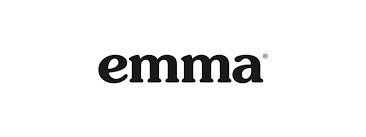In the ever-expanding universe of digital marketing, choosing the right email marketing tool is like finding a compass in a sea of possibilities. It’s a decision that could steer the ship of your business toward uncharted territories of success. Today, we’re shining a spotlight on two notable navigators in this sea: Emma Email Marketing Tool and SalesHandy. Both have charted impressive courses in the world of email marketing, but which is the best fit for your voyage? Let’s embark on this exploratory journey by focusing on a key area of comparison.
| Emma Email Marketing Tool | SalesHandy |
|---|---|
 |  |
| G2 Score – 4.0 out of 5 stars | G2 Score – 4.6 out of 5 stars |
| TrustRadius Score – 8.6/10 | TrustRadius Score – 9/10 |
User Interface and Ease of Use
Emma’s Smooth Sailing vs SalesHandy’s Detailed Compass
The user interface of an email marketing tool is your control panel; it’s where you chart the course of your campaigns. An intuitive and straightforward interface can make your marketing journey enjoyable and effective. Let’s compare Emma and SalesHandy in this crucial aspect.
Emma: Navigating with Intuitive Ease
Emma is celebrated for its user-friendly interface, making it a popular choice among businesses of various sizes. Designed for simplicity, the platform offers a clean, organized dashboard that guides users effortlessly through its various features. This approach is a boon for businesses looking to launch their email campaigns quickly and efficiently, without getting lost in a complex interface.
The email creation process in Emma is a testament to its commitment to ease of use. With a straightforward drag-and-drop editor, crafting visually appealing emails becomes a breeze, even for those with minimal design experience. The platform’s range of customizable templates serves as a creative launchpad, enabling you to create emails that resonate with your brand’s identity effortlessly.
Moreover, managing your subscriber lists in Emma is a hassle-free experience. The platform provides an efficient way to import, organize, and segment your contacts, facilitating targeted and effective email campaigns. This straightforward approach is crucial for personalized and efficient communication.
SalesHandy: Charting a Course with Detailed Maps
SalesHandy, while offering a robust suite of features, takes a more detailed approach in its user interface. It caters to users who prefer depth and detail in their email marketing tools. This approach, however, might present a steeper learning curve, particularly for beginners or those who favor a more straightforward tool.
SalesHandy’s strength lies in its comprehensive features, including advanced tracking capabilities, detailed analytics, and email scheduling tools. While navigating these features might require more time and effort, they offer a level of control and functionality that can be invaluable for users who need detailed insights into their email marketing campaigns.
The platform also offers a range of templates, but customizing these might not be as intuitive as Emma’s simpler editor. This aspect is something to consider for those who place high value on ease of use and quick setup.
Email Automation and Personalization
Emma’s Customized Campaigns vs SalesHandy’s Precision Tools
Email automation and personalization are critical in today’s marketing landscape, defining the success of your engagement with customers. Let’s dive into how Emma and SalesHandy empower you with these functionalities, comparing their approaches to automation and personalization.
Emma: Crafting Personalized Experiences with Ease
Emma’s platform is renowned for its ability to deliver personalized email experiences that resonate with each segment of your audience. The tool offers an array of features that enable you to tailor your messages based on subscriber data, ensuring every communication feels relevant and personal.
In the realm of automation, Emma shines with its user-friendly features. You can effortlessly set up automated email sequences that respond to specific actions or behaviors from your subscribers. This could range from a welcome series for new sign-ups to targeted offers for your most engaged customers, ensuring that your communication is always timely and relevant.
Moreover, Emma’s segmentation tools are powerful yet intuitive. They enable you to divide your audience into distinct groups based on their interests, behaviors, and interaction history. This precise segmentation leads to more targeted campaigns, significantly improving engagement and conversion rates.
SalesHandy: Detailed Control for Targeted Automation
SalesHandy takes a more detailed approach to email automation and personalization. The platform is designed for users who seek depth and customization in their email marketing strategies.
SalesHandy excels in providing advanced automation tools that enable you to create complex, behavior-triggered email sequences. These tools are particularly useful for businesses that need to manage intricate email workflows or those who want to leverage detailed subscriber data for highly targeted campaigns.
In terms of personalization, SalesHandy offers robust segmentation capabilities and dynamic content options. This allows for a high degree of customization in your emails, ensuring that each message is as relevant and engaging as possible to the individual recipient.

Related: Check out our free SEO suite

Analytics and Reporting
Emma’s Streamlined Insights vs SalesHandy’s Data-Driven Precision
The analytics and reporting capabilities of an email marketing tool can significantly influence your marketing strategies, offering insights that help refine your campaigns for better engagement and effectiveness. Let’s compare the analytics features of Emma and SalesHandy to see how they support your data-driven decision-making.
Emma: Intuitive Analytics for Strategic Insights
Emma’s approach to analytics emphasizes user-friendliness and actionable insights. The platform provides essential metrics such as open rates, click-through rates, and unsubscribe rates in an easily understandable format. This simplicity is perfect for businesses that require quick insights to inform their email marketing decisions.
The strength of Emma’s analytics lies in its clear and concise presentation. Even those with limited experience in data analysis can easily interpret the results, making informed decisions to enhance their marketing strategies. This ease of understanding is crucial for quick, data-driven adjustments to your campaigns.
Furthermore, Emma includes A/B testing capabilities, allowing you to test different variables in your emails. This feature is essential for optimizing your email content and structure based on empirical data, improving the overall effectiveness of your email marketing efforts.
SalesHandy: Comprehensive Analytics for In-Depth Analysis
SalesHandy takes a more comprehensive approach to analytics, catering to those who seek detailed insights into their email marketing performance. The platform offers advanced analytics tools that provide in-depth data on various aspects of your email campaigns.
With SalesHandy, you can delve into granular details of your campaigns, analyzing metrics like engagement trends, detailed subscriber behavior, and more. This level of detail is invaluable for businesses that base their strategies on thorough data analysis and wish to optimize every aspect of their email marketing for maximum impact.
SalesHandy’s reporting tools also allow for customization, enabling you to focus on metrics that are most relevant to your specific business goals. This customization is a significant advantage for businesses with particular reporting needs or those that want to align their email marketing metrics closely with broader business objectives.
Pricing and Plans
Emma’s Flexible Options vs SalesHandy’s Streamlined Packages
In the world of email marketing, the pricing strategy of a tool can significantly impact your choice. It’s essential to weigh not just the cost, but also the features and value each platform offers. Let’s explore the pricing models of Emma and SalesHandy to see which platform might be the best financial fit for your business needs.
Emma
- Pricing is typically tiered based on features and list size:
- Pro Plan: Offers automation, segmentation, and analytics. Pricing usually starts at around $89/month.
- Plus Plan: Includes additional features like landing pages and A/B testing. Pricing is higher and usually requires a quote from Emma.
- Enterprise Plan: Custom pricing for advanced needs like custom integrations and dedicated support.
SalesHandy
- Free Plan: Basic features including email tracking and scheduling.
- Regular Plan: Priced at $9 per user per month, offering unlimited email tracking and templates, and mail merge features.
- Plus Plan: At $22 per user per month, includes advanced features like team reports, team templates, and document tracking.
- Enterprise Plan: At $49 per user per month, adding features like dedicated account manager and custom integration.
Emma: Customizable Pricing for Various Business Sizes
Emma offers a range of pricing plans tailored to different business sizes and needs, providing a level of flexibility that can appeal to a wide array of businesses. This tiered pricing structure allows you to select a plan that best matches your current requirements in terms of features, subscriber count, and budget.
The key benefit of Emma’s pricing model is its scalability. As your business grows and your email marketing needs become more complex, you can easily transition to a higher plan. For larger organizations with more specific needs, Emma also offers custom pricing solutions, ensuring that even the most demanding requirements are met.
The scalability in Emma’s pricing model is particularly beneficial for growing businesses, as it provides the flexibility to start with a basic plan and expand as needed, making it a cost-effective option for businesses at different stages of development.
SalesHandy: Clear and Straightforward Pricing
SalesHandy takes a more straightforward approach with its pricing model. It offers clear and concise packages that cater to businesses of various sizes but with less flexibility compared to Emma. The pricing is typically based on the number of users and the features included in each package.
One of the advantages of SalesHandy’s pricing structure is its simplicity. With clearly defined packages, it’s easy for businesses to understand what they’re getting and how much it will cost. This can be particularly appealing for small businesses or startups that prefer a simple, no-frills approach to pricing.
Despite its straightforward packages, SalesHandy provides a comprehensive set of features, including advanced tracking capabilities and detailed analytics. This makes it a valuable tool for businesses that need a range of functionalities at a predictable cost.
Integration and Scalability
Emma’s Versatile Adaptability vs SalesHandy’s Robust Integration
In today’s interconnected digital marketing landscape, the ability of an email marketing tool to integrate seamlessly with other business systems and scale with your business is crucial. Let’s delve deeper into the integration capabilities and scalability of Emma and SalesHandy to understand which platform could better serve your evolving business needs.
Emma: Smooth Integration for a Unified Marketing Approach
Emma’s platform is designed to integrate smoothly with a variety of marketing tools and systems, ensuring a unified approach to your marketing strategy. This seamless integration capability allows Emma to fit effortlessly into your existing marketing tech stack.
Emma offers integrations with popular CRM systems, e-commerce platforms, social media channels, and other essential marketing tools. These integrations enable a smooth flow of data across platforms, enhancing the effectiveness of your marketing campaigns. By utilizing data from different sources, Emma helps you craft more personalized and impactful email campaigns.
In terms of scalability, Emma shows its strengths in adapting to the growing needs of a business. Whether it’s expanding your subscriber base or requiring more advanced marketing features, Emma’s platform is capable of handling these changes. This scalability ensures that Emma remains a relevant and effective tool for your email marketing needs as your business grows.
SalesHandy: Comprehensive Integration for Detailed Marketing Strategies
SalesHandy offers robust integration capabilities, catering to businesses that require detailed and comprehensive marketing strategies. The platform is designed to integrate with a wide array of systems, including advanced CRM platforms, productivity tools, and other marketing solutions.
The extensive range of integration options with SalesHandy makes it a strong candidate for businesses looking to create a cohesive and data-driven marketing strategy. The ability to synchronize data across different platforms enables you to gain deeper insights into your campaigns, leading to more sophisticated and effective marketing efforts.
Scalability is another area where SalesHandy excels. The platform is equipped to handle the increasing complexities that come with business growth, whether it’s managing larger subscriber lists or more intricate marketing automation requirements. SalesHandy’s infrastructure is robust, supporting your business’s scaling needs effectively.
Conclusion
In conclusion, when it comes to choosing between Emma Email Marketing Tool and SalesHandy, the decision depends on your specific business needs, marketing strategy, and the level of integration and scalability you require.
Emma stands out for its intuitive interface, making it an excellent choice for those who value ease of use and simplicity in their marketing tools. It’s particularly well-suited for businesses looking to launch personalized email campaigns quickly and efficiently, without the need for extensive technical expertise. Emma’s customizable pricing plans and scalable solutions cater to a range of business sizes, offering flexibility as your business grows.
SalesHandy, on the other hand, offers robust integration capabilities and detailed analytics, making it a strong choice for businesses that require in-depth insights and a high degree of control over their email marketing strategies. Its comprehensive feature set and ability to handle complex automation make SalesHandy ideal for businesses with advanced marketing needs or those that heavily rely on data-driven strategies.
Both Emma and SalesHandy offer unique advantages that can significantly enhance your email marketing efforts. Emma is preferable for its user-friendliness and ease of use, making it suitable for small to medium-sized businesses. Conversely, SalesHandy is more suited for larger businesses or those with a focus on leveraging detailed analytics and extensive integrations in their marketing campaigns.
Read Next:





















